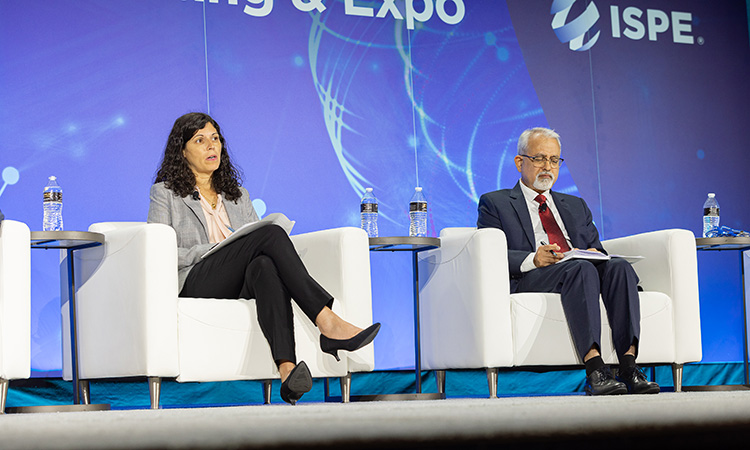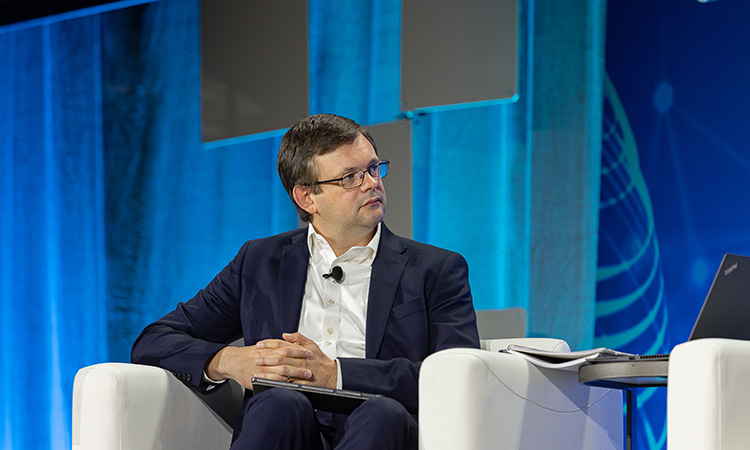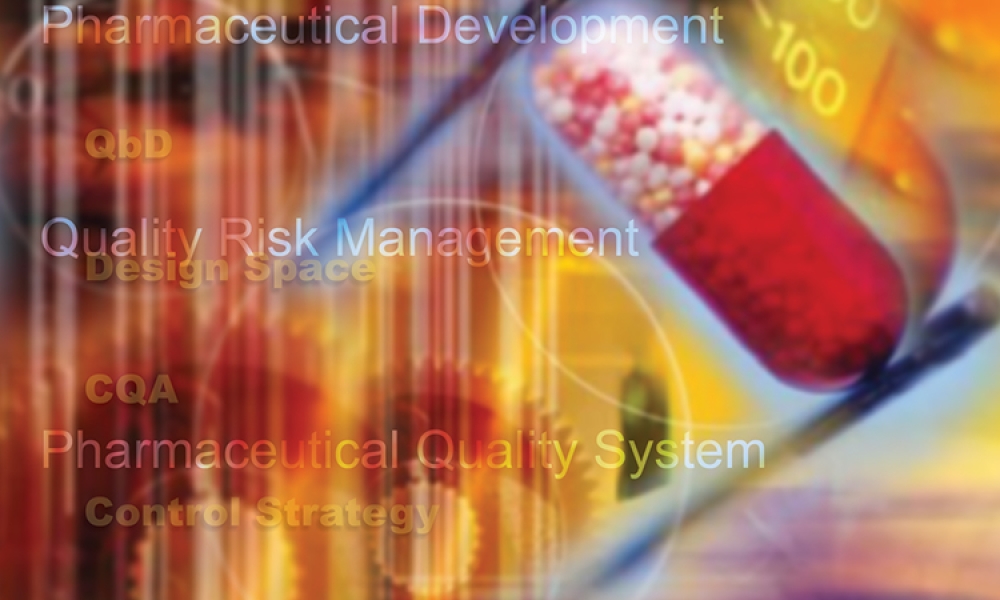ISPE Global Regulatory Townhall Focused on Review and Inspection Practices

At the 2023 ISPE Annual Meeting & Expo held in Las Vegas, NV, USA on 18 October 2023, a panel of global regulators answered questions submitted by attendees. The panel consisted of Paul Gustafson, PIC/S Chair and Sr. Corporate Regulatory Compliance & Enforcement Advisor, Health Canada; Evdokia Korakianiti, Head of Quality and Safety of Medicines, European Medicines Agency (EMA); Celia Lourenco, Associate Assistant Deputy Minister, Health Products & Food Branch, Health Canada; Commander Mahesh Ramanadham, Deputy Director for the Office of Policy for Pharmaceutical Quality, US FDA; and Vimal Sachdeva, GMP Inspector - Technical Officer, World Health Organization (WHO).
The Global Regulatory Town Hall program was developed by ISPE members Ciby Abraham, PhD, Senior Director and Group Manager, Project and Product Leadership, AstraZeneca; Connie Langer, Director, CMC-Global Regulatory, Pfizer; and Sarah C. Pope Miksinski, PhD,Executive Director, CMC Regulatory Affairs, Gilead Sciences Inc. The discussion was moderated by David Churchward, Global Head Sterility Assurance, Cell and Gene Technologies, Lonza Biologics.
Churchward introduced the overall theme of the session, which was harmonization of review and inspection practices between and within regulatory agencies.
Theme 1: How can collaboration between inspection and dossier review be successful in bringing emerging technologies to market faster?

Korakianiti said that cooperation between reviewers and inspectors who assess an applicant’s pharmaceutical quality system (PQS) is essential when evaluating applications involving new technologies. Reviewers and inspectors can go together to on-site inspections, and this helps develop a common standing based on the practical elements of what are the risks that really matter. Europe has established the Quality Innovation Group (QIG) whose aim is to help to facilitate the uptake of advanced manufacturing. This group consists of assessors and inspectors, who come together and discuss cases. In her experience this is a very powerful way of facilitating uptake of advanced manufacturing and clarifying the regulatory expectations.

Ramanadham agreed with the European process, which closely aligns with FDA’s procedures such as the Emerging Technologies Team (ETT) and Framework for Regulatory Advanced Manufacturing Evaluation (FRAME) initiative. With his GMP background, Mahesh stressed that GMP aspects related to introduction of new technology are very important. The ETT consists of both assessors and inspectors so that both parties can prepare for the submission and subsequent inspection. FDA has a new mandate relating to designated platform technologies for applications where a platform technology is used in a subsequent application. Ramanadham did not expand on the detail of this legislation.

Gustafson also agreed with the first two speakers and explained that Health Canada has similar processes. Having the diversity of opinions from assessors and inspectors helps break down barriers and tries to resolve problems that may occur later. This may occur at a pre-NDS meeting with an applicant. Regulators also have platform technologies, an example being docuBridge, in which summary information of approvals given in certified product information documents (CPIDs) is shared across reviewers and inspectors. CPIDs are considered a very good summary of product approval information. In the future, CPIDs may be replaced, at least in part, by Product Lifecycle Management document as detailed in ICH Q12.

Sachdeva also agreed with the previous three speakers from a WHO perspective. In WHO the roles of assessors and inspectors are very clear. There is much more collaboration, much more involvement across those two disciplines where perhaps historically they have been somewhat separate. For applications containing emerging technologies an expert is sent to the site to assist local inspectors.
Churchward asked if there were plans to formalize these interaction processes.
Gustafson was of the opinion that implementation of ICH Q12, Technical and Regulatory Considerations for Pharmaceutical Product Lifecycle Management, would help bring assessors and inspectors more closely together and noted that Health Canada is working to improve and make these interactions more formal.

Ramanadham agreed with Gustafson regarding Q12 implementation, noting that he was personally excited about it having been an FDA representative on the ICH Expert Working Group and heavily involved in Q12 implementation by FDA. Q12 talks about assessor and inspector coordination. The guideline and training materials are available on the ICH website. During FDA Q12 implementation training it was recognized that much more partnering was needed with groups like PIC/S. He indicated that potentially there will be opportunities to further formalize as we go forward.
From a European perspective Korakianiti added that there has always been an opportunity for assessors to join an inspection. An example of formalization is that the Quality Working Party (small molecules) meets with the Biological Working Party twice per year. There are many topics of common interest such as emerging technologies and process validation.
Theme 2: Efforts in coordination for harmonizing and streamlining regulatory submission approval processes.
Churchward opened by citing the projects ORBIS and ACCESS as two good examples of coordination across regulatory agencies currently in progress.
Lourenco reflected that regulators have been moving in this direction since ICH was started in 1989 by the WHO. ICH works on harmonizing technical guidelines and PIC/S aims at harmonising inspection procedures and worldwide GMPs in a non-binding cooperative manner. In addition to ORBIS and ACCESS there are programs under consideration in Africa and Middle East. She noted the need to find efficiencies and leverage expertise globally.
Ramanadham reminded the audience that regulators need to work within national requirements. However, they should not stop at this and should work at finding common ground as is being piloted in two International Coalition of Medicines Regulatory Agencies (ICMRA) projects. One project is for post approval changes (PACs), and the other for hybrid inspections. Regulators are exploring where they can work together within their national frameworks to develop common ideas or approaches, or ways of accessing information to assess risk and reach the same goal. Thinking about risk the same way and reaching conclusions in a similar fashion by working together is a goal while leaving space for unique considerations when it comes to national regulatory frameworks. During COVID 19, quick approval of changes was achieved that had a positive impact to supply; it will be interesting to see if similar flexibilities and common pathways can be achieved in a wider range of situations.
Korakianiti confirmed EMA participation in the ICMRA pilots, however, indicated that there is a lot of work at the “how” level. Over the years, however, EU member states working together have achieved common outcomes, so it should not be impossible across regions. She stressed that the goal was same findings and outcome without regional requirements.

Asked about the GMP perspective, Sachdeva mentioned that international consortia such as ORBIS and ACCESS should include major health authorities such as FDA, EMA, PMDA and Health Canada and these agencies could set the tone and have a major influence on setting global standards and guidelines. A harmonized approach by these parties should have a good impact on other countries.
From a PIC/S perspective, Gustafson added that PIC/s had received support from the ACCESS consortium to facilitate harmonization across inspectorates globally. PIC/S continues to work to harmonize GMP standards globally and is promoting the concept of mutual reliance. A good example is the work to develop Annex 2 to the PIC/S Guide to GMP for Advanced Medicinal Therapeutic Products (ATMPs) and Biological Products. This process was led by PIC/S and involved inspectorates globally.
In response from a question from the audience regarding progress with the ICMRA pilot on hybrid inspections, Korakianiti commented that one is about to close, and another is scheduled to close in 2024. Some time was taken to develop a clarification protocol on the scope and process of the pilot. Potentially an outcome of the pilot will be an internationally agreed protocol, which could be good for regulators in terms of efficiency gains.
Theme 3: Adoption of harmonized standards from ICH, PIC/S, etc., including the interface between regulatory inspections and assessment (e.g., ICH Q12)
Churchward provided context asking how this operates in terms of specific national requirements, for instance how does a country ensure that their national requirements are addressed if they rely on the inspection conducted by a different authority who may have slightly different requirements?
Working on mutual recognition agreements (MRAs) has given Ramanadham great experience in considering the detail of individual country requirements and potential differences of approaches. It is possible that national requirements are requiring different outcomes. For example, in the US, preapproval inspections are different in requirements from surveillance inspections, and there are differences in approaches to remote/hybrid inspections and record requests. Nonetheless, there are opportunities to leverage common ground with balance and responsibility.
Lourenco again reminded the audience that ICH and PIC/S have been operating for over 30 years and these processes provide an excellent foundation for regulators to collaborate. She stressed that it is important to ensure that guidelines are implemented across the different partners consistently. In the ACCESS program, partners started confidence building with staff exchanges, some for prolonged periods as well as processes for learning from each other such as work sharing. The objective is to build confidence and trust. There remain some differences such as timelines, however, the partners are working on reducing these.
Gustafson pointed out that development of Annex 1, GMP for Sterile Products, was a great example of many inspectorates cooperating to produce a guideline meeting essentially all major requirements. He accepted there were some residual, subtle differences, however, it is considered close enough.
Sachdeva said that from a WHO perspective, there are three steps. The first two, international collaboration and harmonizing standards have been discussed at length, however, there is a third element which is a risk-based approach. Application of a risk-based approach should minimize duplication and the need for additional requests.

Churchward asked about the long-term vision to use new technology with a single dossier for global review.
Ramanadham said that he shares this vision personally and that FDA is taking steps in this direction. FDA is committed to ICH M4Q (R2), which is a revision of the ICH common technical document, quality section. Some objectives of this revision are introduction of structured data and facilitation of life cycle management. FDA is already working on streamlined structured submissions with its Knowledge-aided Assessment and Structured Application (KASA) initiative.
Korakianiti strongly supported the FDA position and looked forward to a future where a technology platform was available where data could be manipulated and used in different ways.
Lourenco explained that such a platform is being developed for the ACCESS program since SharePoint has limited utility, and a cloud-based solution is being tested using dummy data with the use of real data imminent.

Churchward asked if the application of local flexibilities has the potential to undermine MRAs.
Gustafson clarified that MRAs are legal and complex documents, which take a long time to agree. PIC/S, however, has less formal processes, not “forcing” compliance, however, it has similar steps to MRAs such as regular auditing and annual reports to check that MRAs are not undermined. All these actions help build trust and confidence.
Korakianiti concurred with Gustafson regarding the challenges on agreeing and maintaining MRAs. She stressed that regulators should focus on what really matters.
Gustafson was asked if PIC/S had a role in harmonization of GCP requirements. He did indicate that PIC/S does have a role such a facilitating inspection for integrity of clinical study including bioequivalence data. PIC/S uses its expert circles and joint visit programs (JVPs) for inspectors to come together for training, to build confidence and minimize differences.
With more application of quality risk management, Churchward asked if there are steps that industry can take in the run up to filing to maybe better outline the rationale taken for a risk-based or novel approach.
Ramanadham replied that there are many steps companies can take and there is much evidence through the FDA ETT program of success. Steps such as talking in advance to the agency, promoting advanced visits to a facility or arranging review of facility designs are good examples. The last place to spring a new technology on an agency is during an inspection at which there are great pressures on all sides.
Churchward closed the session by thanking all panelists for what was judged to be a valuable and informative discussion.

Disclaimer:
Disclaimer: This is an informal summary of a panel discussion held on 18 October at the 2023 ISPE Annual Meeting & Expo in Las Vegas, Nevada, USA. It has not been vetted by any of the agencies or regulators cited in this article, nor should it be considered the official positions of any of the agencies referenced.




